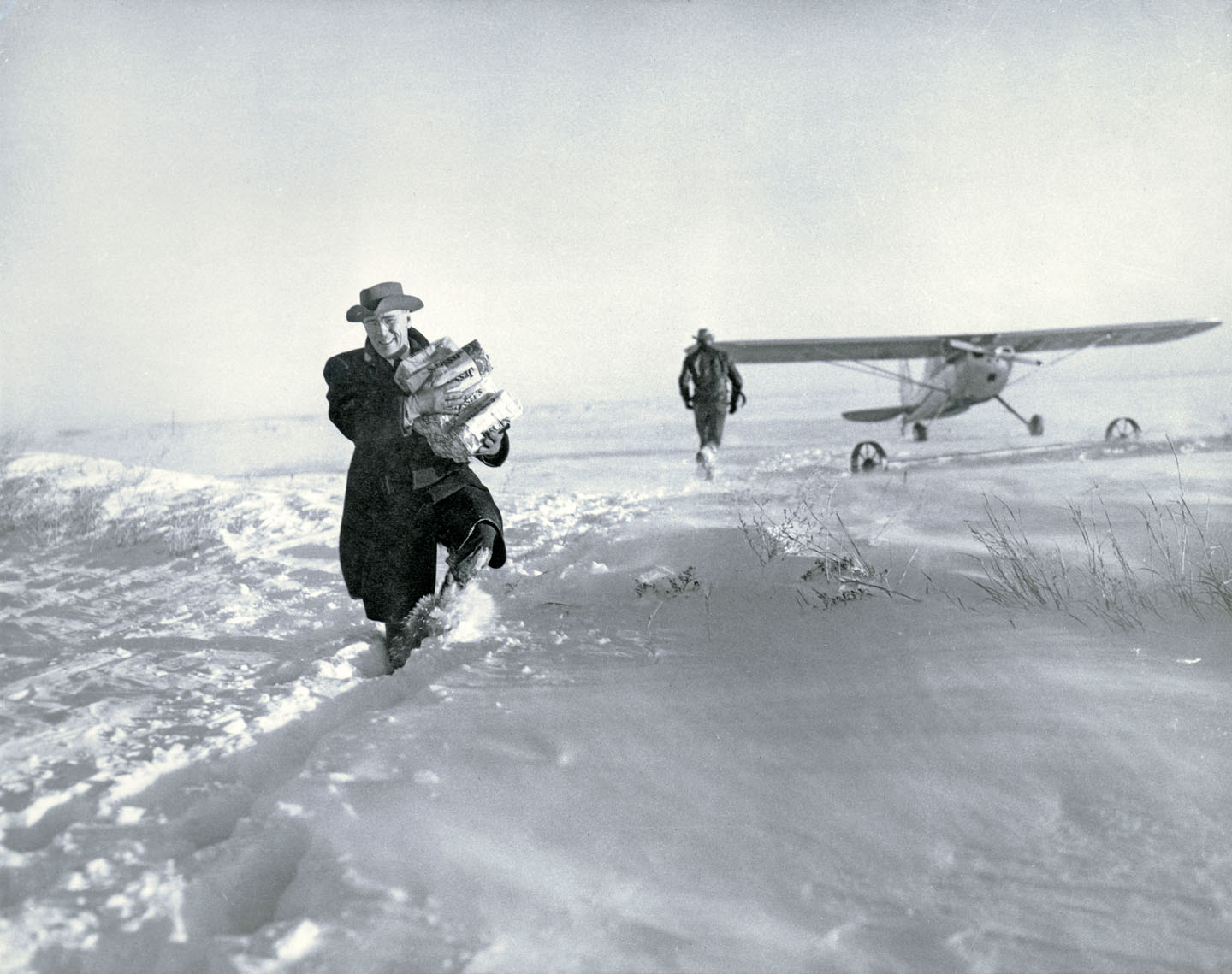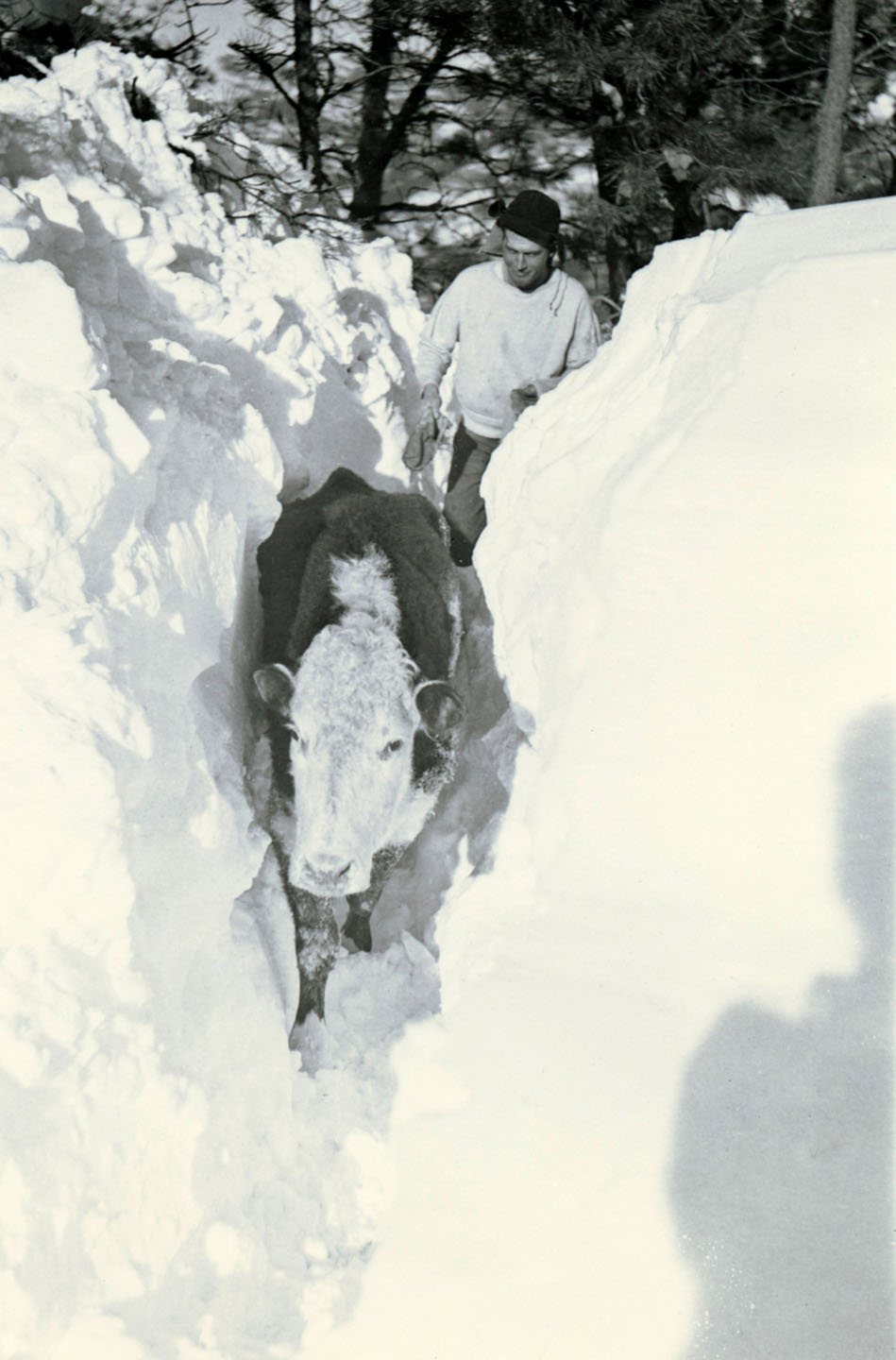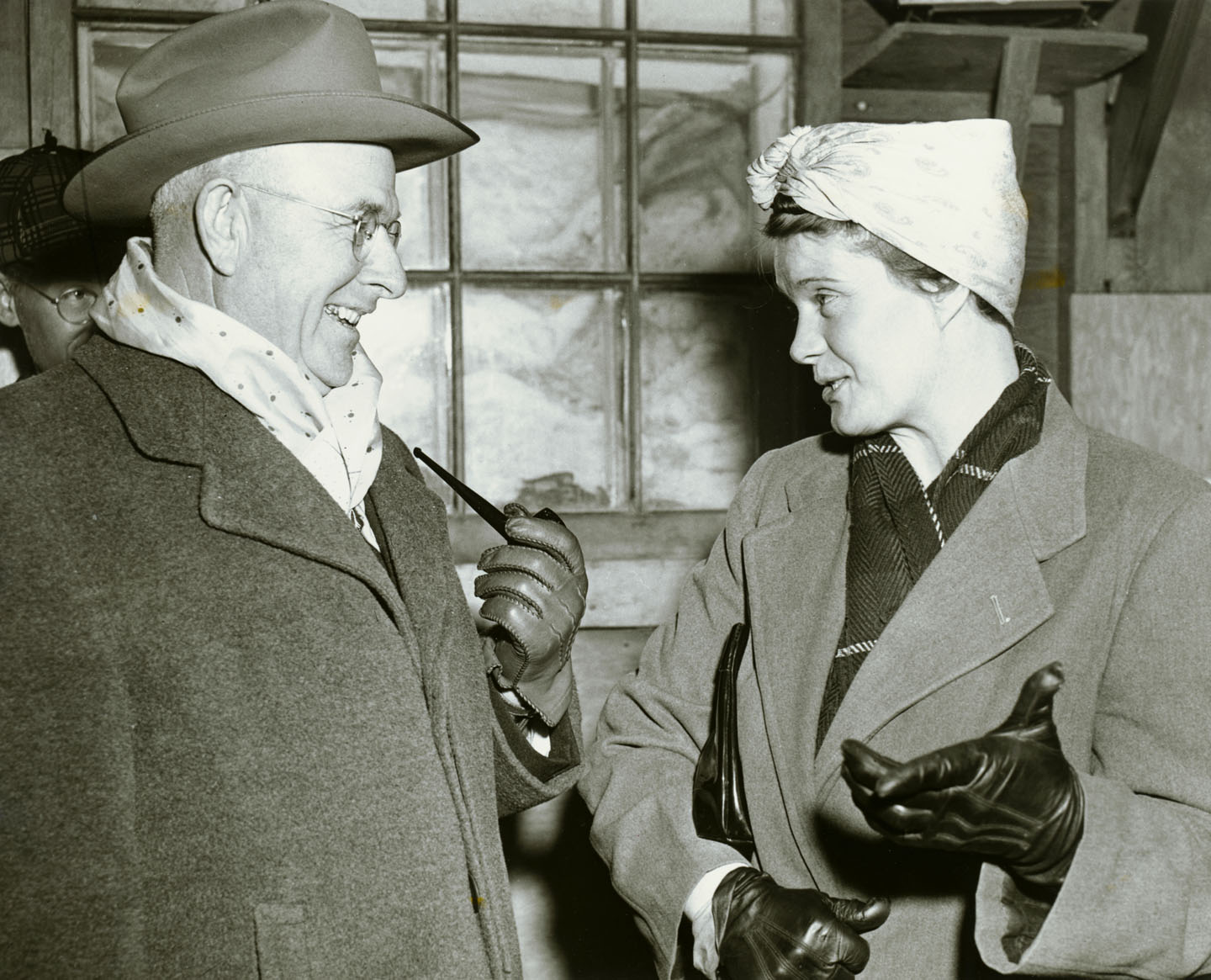
By Patricia G. Gaster, Nebraska State Historical Society
The winter of 1948-49 brought Nebraskans the most prolonged battle with the elements in the state’s history. The first snowstorm hit Nov. 19, 1948, and the second on Dec. 29, to be followed by another on Jan. 2-5, 1949. State and local highway crews found that no sooner had they opened a stretch of road that it was closed again by drifting or by fresh snow. Trains were stalled, and for days in many areas the only effective transportation was by air.
The Nebraska National Guard was called out, and volunteers worked to rescue trapped livestock, homes and even whole communities. But the job was too big for Nebraska and other western states alone. On Jan. 28, 1949, Maj. Gen. Lewis A. Pick was named to direct one of the U.S. Army’s most extensive rescue operations in peacetime.

They called it Operation Snowbound. The Fifth Army moved in with bulldozers and M29 Weasels (a tracked vehicle used in World War II). During 23 days of operation, the Army put up impressive numbers: opening 87,073 miles of road, liberating 152,196 persons from snowbound homes, transporting 35 sick persons to receive medical care or hospitalization, and delivering feed for more than 3,500,000 head of livestock.
Everyone who lived through the “Blizzard of ’49” had a story to tell. Irene Woodburn of Wausa, for example, recalled how rain began to fall on Nov. 18:
“During the night it turned into heavy wet snow with high wind. This continued until the early morning of the 20th, leaving 30 inches of snow. I was a night operator at the telephone office. … I was able to get to work every night, but many times thought I wouldn’t make it. Only main street lights were on to conserve power. Cleanup operations hardly started when wind drifted it all shut again.

“This and more snow was to be the pattern until well into April. At last there was no place to shovel the snow, so no one did, and we walked over banks. Several thick layers of ice in the snow banks made clearing of snow impossible in places, as snow plows couldn’t move it, so dynamite was used in some places. One snowplow operator from Iowa said, ‘I didn’t know Nebraska had concrete in their snowbanks.’
“Farmers used many different kinds of rigs to take groceries and other needed items home. All roads were blocked and many remained that way until spring. A local man who had been a pilot in WWII, flew a ski-plane, taking medicine, groceries, etc., also bring[ing] some sick people to the doctor and hospital when needed … .

“The army men came with a machine called a weasel. It could be driven over snowbanks to reach homes. Highway 81 was the only hard surfaced road into Wausa at that time, so it was possible to get supplies when the road was open. Other towns weren’t as fortunate. The handcar on the railroad was used between Wausa and Bloomfield. … The final total of snow was 90 inches. Some snowbanks were 25 to 35 feet.”
Each winter this incredible storm returns to the memories of those who lived through it, and for good reason.
Visit NSHS’s website at history.nebraska.gov.
